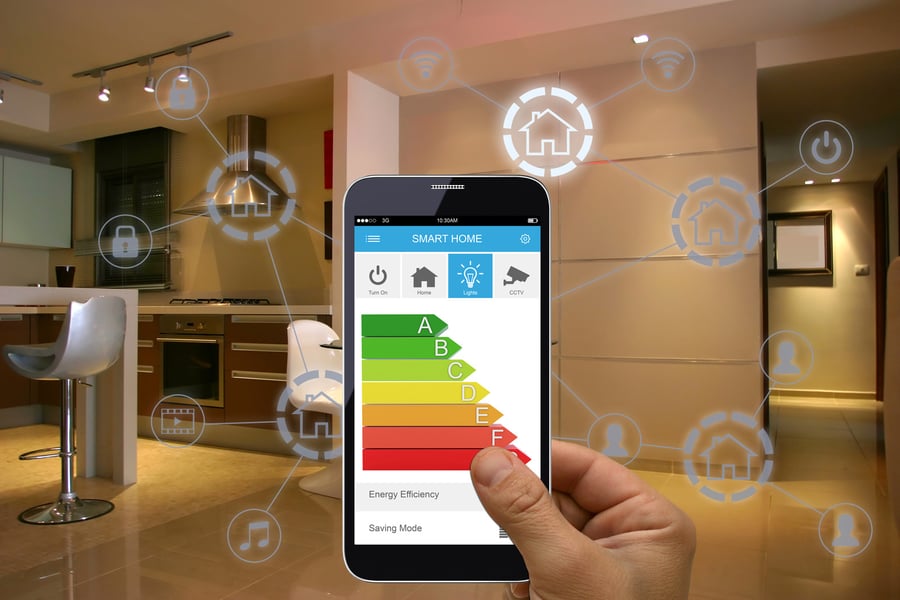Powell Tax Law Blog

New IRS Rules: Energy Efficiency & Clean Energy Tax Credits
Making energy-efficient home improvements, such as upgrading to Energy Star-certified windows and doors, and installing clean energy equipment, such as solar panels and water heaters, can save taxpayers big on their tax bill each year over the next decade under new IRS rules.
Beginning Jan. 1, 2023, taxpayers can qualify for a tax credit of up to $3,200 for making qualified energy-efficient home improvements – this credit equals 30 percent of certain qualified expenses including qualified energy efficiency improvements installed during the year, residential energy property expenses, and home energy audits.
The maximum credit you can claim each year is:
- $1,200 for energy property costs and certain energy-efficient home improvements, with limits on doors ($250 per door and $500 total), windows ($600), and home energy audits ($150).
- $2,000 per year for qualified heat pumps, biomass stoves, or biomass boilers.
“Under revamped tax credits, homeowners can get up to $1,200 for insulation and other items, and up to $2,000 for a heat pump, calculated at 30 percent of the costs. A tax credit lowers your tax bill dollar for dollar,” explained the Wall Street Journal. “It is an annual credit, meaning you could take it one year for putting in new windows, and another year for adding insulation. You can claim improvements made in 2023 on IRS Form 5695 when you file taxes next year. You can’t get back more than you owe in taxes, and you can’t carry forward any excess to future tax years.”
In addition, the Residential Clean Energy Property Credit of 30 percent for the cost of installing solar panels, solar water heaters, fuel cells, wind turbines, and other qualifying equipment has no overall dollar limit – though the fuel cell property expenditures credit is 30 percent up to maximum credit of $500 for each half kilowatt of capacity of the qualified fuel cell property.
Who Qualifies for the Energy Home Improvement Credit?
The Energy Home Improvement Credit can be claimed for improvement to your main home (considered by the IRS where you generally live most of the time).
For the energy efficiency home improvement credit, the home must be:
- Located in the United States.
- An existing home that you improve or add onto, not a new home.
In most cases, the home must be your primary residence (where you live most of the year). You can't claim the credit if you are a landlord or other property owner who doesn't live in the home.
If you use your home partly for business, the credit for eligible clean energy expenses is as follows:
- Business use up to 20 percent: full credit.
- Business use more than 20 percent: credit based on the share of expenses allocable to nonbusiness use.
What are the Qualified Expenses and Credit Amounts?
Building Envelope Components
To qualify, building envelope components must have an expected lifespan of at least 5 years. Qualified components include new:
- Exterior doors that meet applicable Energy Star requirements. Credit is limited to $250 per door and $500 total.
- Exterior windows and skylights that meet Energy Star Most Efficient certification requirements. Credit is limited to $600 total.
- Insulation and air sealing materials or systems that meet International Energy Conservation Code (IECC) standards in effect at the start of the year 2 years before installation. For example, materials or systems installed in 2025 must meet the IECC standard in effect on Jan. 1, 2023. These items don't have a specific credit limit, other than the maximum credit limit of $1,200.
Labor costs for installing building envelope components don't qualify for the credit.
Home Energy Audit
A home energy audit for your main home may qualify for a tax credit of up to $150.
To qualify in 2023 (there will be new rules in 2024), the home energy audit must:
- Include a written report and inspection that identifies the most significant and cost-effective energy efficiency improvements concerning the home, including an estimate of the energy and cost savings concerning such improvement.
- Be conducted and prepared by a home energy auditor.
Residential Energy Property
Residential energy property that meets the Consortium for Energy Efficiency (CEE) highest efficiency tier, not including any advanced tier, in effect at the beginning of the year when the property is installed qualifies for a credit of up to $600 per item. Costs may include labor for installation.
Qualified property includes new:
- Central air conditioners.
- Natural gas, propane, or oil water heaters.
- Natural gas, propane, or oil furnaces and hot water boilers.
Oil furnaces or hot water boilers can also qualify through other efficiency criteria.
Costs of electrical components needed to support residential energy property, including panelboards, sub-panelboards, branch circuits, and feeders, also qualify for the credit if they meet the National Electric Code and have a capacity of 200 amps or more. There is a limit of $600 per item.
Heat Pumps, Biomass Stoves, and Boilers
Heat pumps and biomass stoves and boilers with a thermal efficiency rating of at least 75% qualify for a credit of up to $2,000 per year. Costs may include labor for installation.
Qualified improvements include new:
- Electric or natural gas heat pumps.
- Electric or natural gas heat pump water heaters.
- Biomass stoves and boilers.
Subsidies, Rebates, and Incentives
When calculating your credit, you may need to subtract subsidies, rebates, or other financial incentives from your qualified property expenses because they're considered a purchase price adjustment:
- Public utility subsidies for buying or installing clean energy property are subtracted from qualified expenses. This is true whether the subsidy comes directly to you or a contractor on your behalf. However, utility payments for clean energy you sell back to the grid, such as net metering credits, don't affect your qualified expenses.
- Rebates are subtracted from qualified expenses if all of these apply:
o The rebate is based on the cost of the property.
o It comes from someone connected to the sale such as the manufacturer, distributor, seller, or installer.
o It isn't given as payment for services you provide.
- State energy efficiency incentives are generally not subtracted from qualified costs unless they qualify as a rebate or purchase-price adjustment under federal income tax law. Many states label energy efficiency incentives as rebates even though they don't qualify under that definition. Those incentives could be included in your gross income for federal income tax purposes.
What You Need to Know About the Residential Clean Energy Property Credit
The following residential clean energy expenditures are eligible for a Residential Clean Energy Property Credit of 30 percent of the cost:
- Solar electric property expenditures (solar panels).
- Solar water heating property expenditures (solar water heaters).
- Fuel cell property expenditures.
- Small wind energy property expenditures (wind turbines).
- Geothermal heat pump property expenditures.
- Battery storage technology expenditures.
In general, traditional roofing materials and structural components do not qualify for the Residential Clean Energy Property Credit because they primarily serve a roofing or structural function. However, some solar roofing tiles and solar roofing shingles serve as solar electric collectors while also performing the function of traditional roofing, serving both the functions of solar electric generation and structural support and such items qualify for the credit.
There is no overall dollar limit for the Residential Clean Energy Property Credit. The credit is generally limited to 30 percent of qualified expenditures made for property placed in service beginning in 2022 through 2032.
However, the credit allowed for fuel cell property expenditures is 30 percent of the expenditures up to a maximum credit of $500 for each half kilowatt of capacity of the qualified fuel cell property.
In the case of a residence or dwelling unit that is jointly occupied by two or more individuals, the maximum amount of such fuel cell property expenditures used to calculate the total Residential Clean Energy Property Credit amount for all individuals living in that dwelling unit during a calendar year is limited to $1,667 for each half kilowatt of capacity of qualified fuel cell property.
As always taxpayers are encouraged to keep good records of purchases and expenses during the time the improvements are made. This will assist in claiming the applicable credit during tax filing season.
.webp?width=500&name=thumbnail_large-1(2).webp)






